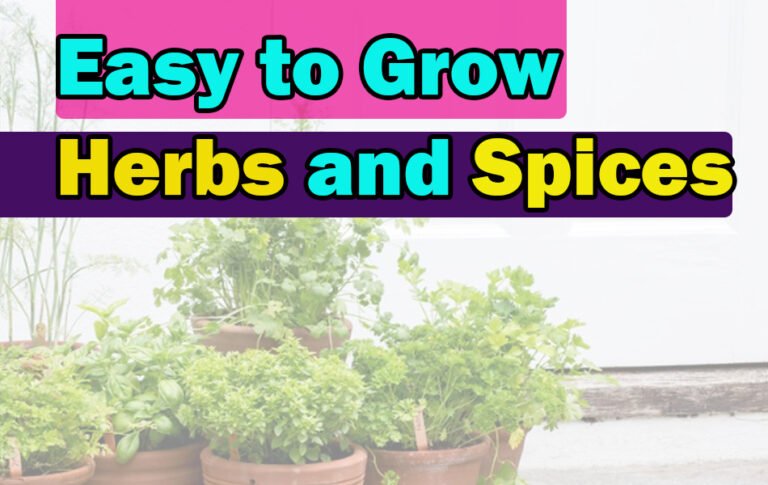These plants would be what you find on your shelves in their separate pots, and that is typically all you need. Having them in their own containers will prevent them from harming your other plants. For example, mint likes to run roots beneath the soil, so it will grow in other areas, too.
- Mint:
This plant would fare well in your greenhouse; the only thing you will really want to watch out for is mint rust. If the leaves look like they have rust on them, you must get rid of the plant. If you can catch it in time, you don’t have to worry. But if it’s been too long, then the rust can spread to the soil and other plants nearby. Mint will be fine in most soils. You just want to plant it at least 2 inches under the soil, and if you are growing more than one plant in one container, they have to be at least 12 inches apart.
- Cilantro:
It can grow up to 3 feet in height in loose, well-draining soil. While they grow easily and self-seed, they need constant watering. You also don’t want to attempt transplanting them into another pot at any point. If the taproot is damaged in any way, the herb will fail. This herb needs some extra maintenance. You will have to wash the leaves to disrupt the spore cycle, and you never want to feed them with unnecessary amounts of nitrogen.
- Sage:
It is a wonderful perennial to start with, and you can start it with basil and rosemary plants as long as you place them 12 inches apart and label where each plant is. You will want to be delicate with sage when harvesting during the first year, but after that, as long as you just pick it when you need it, you should have a healthy plant for many growing seasons.
- Tarragon:
These are herbs that can tolerate even the worst soil conditions. They have a strong root system, which makes them great for parched, sandy soil. They can survive there for two to three years, but they will need to be taken care of after that.
- Thyme:
It grows well as long as the temperature of your greenhouse is over 70 °F. Right as the flowers open is the best time to harvest them by cutting around 2 inches from the spot. Thyme is also a perennial, so you don’t want to cut the second growth as that could ruin its hardiness when the cold temperatures roll in. They will go dormant during the winter but will still need some attention.
- Bay laurel:
An evergreen plant that will be perfect in your greenhouse. Keeping a warm environment will see this plant grow between three and five feet. The leaves can be picked throughout the growing season as needed, and you will need to keep up with pruning to keep it from getting too bushy.
- Catnip:
Another perennial herb is catnip, which will grow to around three feet as long as it’s getting plenty of sunlight, has well-draining soil, and is watered frequently. While you can practice this for home use, catnip is another great companion plant for repelling bugs.
- Rosemary:
There are two types of this evergreen herb: the upright and the creeper. For greenhouse purposes, you might stick to the upright since you can shape this as an individual plant. On the other hand, you can use the creeper type to cover ground space and ward off weeds. Rosemary needs airflow, or it will develop a powdery mildew.
- Anise:
It is extremely easy to plant. All you need to do is give it well-draining soil and full daylight. This plant doesn’t do well in colder regions. For example, if you live in a zone colder than zone 9, you will need to make sure that you’re keeping conditions in your greenhouse warmer.
- Cumin:
This plant can be put into your beds or a container, and the seeds will germinate in one to two weeks. They can also germinate faster if you soak the seeds for eight hours before planting. With regular watering and full sunlight, you will have a highly productive plant. The trickiest part of cumin will come with the harvest because you don’t want to spill all the seeds. Just remove the pods and wait for them to dry. Then, you will rub the pods to get the seeds out.
- Lavender:
It is a great perennial and is drought-resistant, as well. It does its best in full daylight. If you use grow lights and keep your greenhouse between 64 and 68 °F, you will get the plant to develop in eight to ten weeks. Keep good airflow around your plant so it can avoid the pests and diseases it is prone to.
Ornamentals and Beyond
There is also a range of flowers and plants that you can put in your greenhouse. If you have the space, why not liven up its appearance by having peace lilies or begonias? By knowing your zone, you can find the right type of ornamental plants for your greenhouse.
While we went over a lot of the beginner plants you can grow and some of their details, you should research them thoroughly before planting. You want to make sure the conditions in your greenhouse are right for them to thrive. It also helps because you can list out what soils and fertilizers you will need and plan out how you are going to water them.
Your research will also give you the advantage to grow all year long. What plants can you start earlier and extend their growing season? What will thrive in the warmer months? Which plants are going to grow better when it’s colder? Finding this out can actually help you save some of your energy costs.

